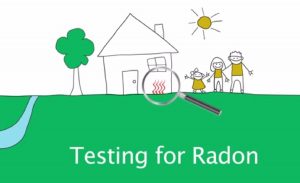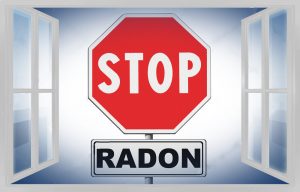Radon is a radioactive gas naturally coming from the ground. It is an odorless, tasteless, invisible gas released from the natural decay of elements found in rocks and soil which include uranium, thorium, and radium. It cannot be eradicated because the usual wear and tear of floorings and walls create cracks where Radon can escape. As a naturally occurring gas, radon can only be controlled to an acceptable level (< 4pCi/L) deemed tolerable for health.
The level of radon indoor varies per region based on the concentration of elements such as thorium. The northern states such as Maine, Idaho, Montana, North Dakota, and Iowa would usually have above 4pCi/L. While Wyoming, Colorado, Nevada, Utah, Washington State, Minnesota, Wisconsin, and northeastern and central states such as Illinois, Ohio, and Pennsylvania would have average radon levels. The lowest radon gas level which is at 2pCi/L is in southern states such as Texas, Louisiana, and Florida, as well as Alaska and Hawaii. These variations in radon level can be used as a guide as to how frequently you should do radon testing and radon mitigation activities.
Radon is the second leading cause of lung cancer in the United States second to smoking. It is responsible for an estimated 21,000 deaths each year in the United States. Therefore, you need to ensure that your living spaces, if not radon-free, has a radon level below 4pCi/L. What are the steps for you to mitigate radon?
- Confirm that there is a Radon problem. It is recommended by professionals to do radon testing at least twice to establish that there is a radon issue. The level of radon changes over time as affected by the weather, pressure, and ventilation. Ensure that you check the level of radon on different days in a similar environment setting. If your initial test had all windows closed, then, your second test should have all windows closed to ensure accurate comparisons.
- Get Professional Help. Once you established that there is an existing radon problem at home, you can do DIY fixes or hire a professional for Radon Mitigation. Small fixes like sealing cracks in the foundation, improving your ventilation and creating pressurization with fans are easy to do, and would not require professional assistance.
- Do routine testing. Radon is natural gas which continuously generated by the decay of organic materials. As time passes with the wear and tear effect, it could be that more radon gas seeps through cracks and crevices which may lead to dangerous radon levels. Ensure that you perform a regular radon level testing. The frequency of testing varies. If you are in a region of higher radon level, a quarterly test might be ideal.
Keep your family safe from Radon. You can schedule a radon testing and radon mitigation in Annapolis or Severna Park with us. It is important to make sure your home is safe from radon. Get in touch with Atlantic Radon to learn more about this dangerous gas and have your home tested. Fill out our contact form to get more information.




